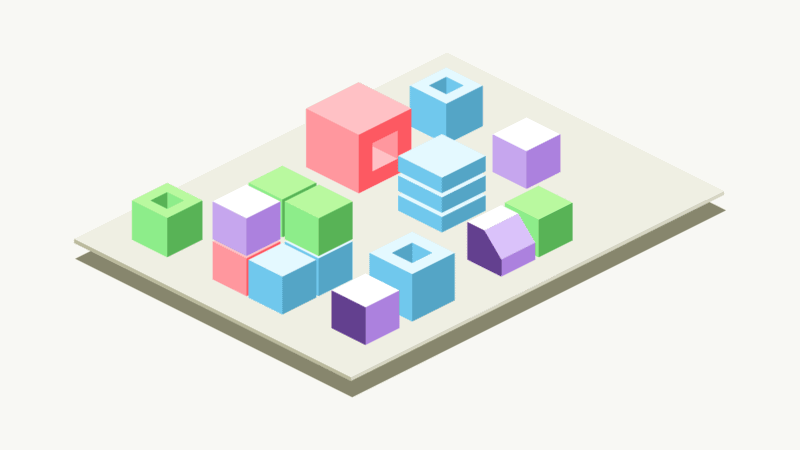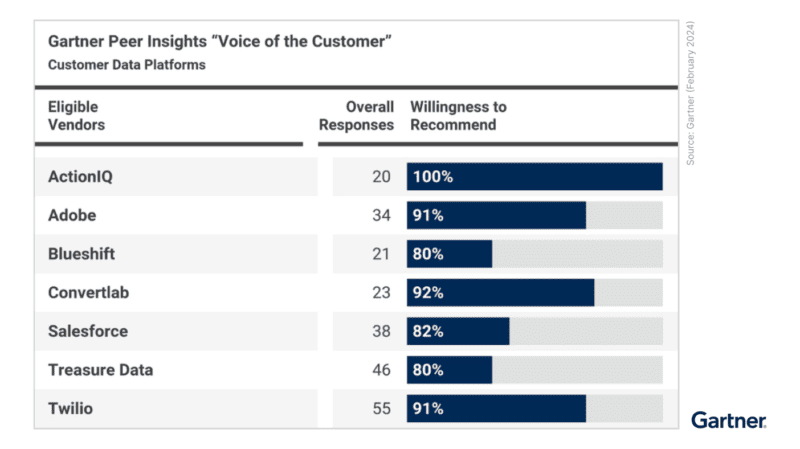6 Questions to Ask Your Potential Composable CDP Vendor

What are the hot topics to discuss lately around customer data? Third-party cookies, data clean rooms, generative AI and… composable CDPs!
The composable approach has been adopted in the commerce space for a few years, but it’s still in early stages for marketing technology. Many customer data platform (CDP) vendors may claim to be composable when in reality, they aren’t bringing the innovation required to truly embody each element of composability.
The architecture framework provided by composable CDPs might be new, it already succeeded at being confusing for technology buyers. And confusion is never a good sign to make a good and successful buying decision, especially in times when the margin for error shrinked — should I even dare saying that error is no longer acceptable?
Composable CDP Definition
Is vendor X a composable CDP or not? To demystify this question, we need a clear definition and easy to evaluate criteria.
Composable CDP: A composable CDP enables a zero-copy architecture with capabilities to eliminate local storage of data copies. The warehouse-agnostic approach offers flexibility so that teams can select their preferred cloud infrastructure while providing business teams with an advanced no-code interface.
3 Key Criteria for Composability
The composable status for a CDP is achieved by meeting all three characteristics defined below. Two out of three isn’t bad, but it won’t be enough to be defined as a composable CDP.
- Zero-copy architecture: Zero-copy architecture avoids duplication of data and associated costs and security risks by allowing data compute to be performed in place within a company’s own data infrastructure. This design enables companies to leverage their existing data storage and processing resources — rather than copying data to external systems or vendors.
- Warehouse agnostic: Things change and the composable CDP should not be tied to a single data warehouse or storage system and should instead work with any type of data storage system. This is important because it allows the system to be more flexible and adaptable based on different client use cases.
- No-code UI: In order for a composable CDP to benefit the IT organization, it needs to enable marketers to self-serve data and insights. As such, composable CDPs must offer a no-code interface into the data warehouse that does not require SQL. The CDP should be able to act as a translation layer between a no-code UI and SQL that will run on the data warehouse.
6 Key Questions to Ask Composable CDP Vendors
Have this list of questions on-hand when you talk to any composable CDP vendor to make sure you’re getting the best. Copy and paste these questions into your RFP, bookmark this blog, or jot it down on a notepad — whatever you do, make sure you ask each question to cover your composability bases.
1. How is your CDP integrated with a Data Warehouse?
Why it matters: Some integrations will reduce data pipelines operational efforts but not remove the data copies — a challenge when a composable CDP is chosen for data security and governance controls.
One common misconception is that composability principles can be achieved using the emerging native data sharing capabilities from cloud data warehouse vendors — but they can’t. While data sharing is a great tool, it only refers to how data is transferred from the customer to the vendor’s data landing zone, like a modern-day file transfer alternative. A CDP using data sharing needs to load and process data in its own cloud, violating the “zero-copy” principle.
A true composable CDP can keep the data stored in the warehouse of choice, pushing down SQL queries to be executed and only returning the result — via reverse ETL — back to the application.
2. Where are queries executed?
Why it matters: From a scalability perspective, organizations need to make sure that the system executing workloads can meet scale and performance requirements. The cost but also in some cases the budget owner varies depending on where queries are executed.
With a packaged CDP, queries are executed in a cloud owned by the CDP vendor. The infrastructure might be purpose-built by the CDP vendor himself, or directly leveraging an existing solution “as is” such as Snowflake — found in CDPs leveraging data sharing capabilities.
With a composable CDP, queries are expected to be pushed down to the data warehouse for execution, leveraging compute resources from the client’s warehouse.
3. On top of which data warehouses are you able to deploy?
Why it matters: Some CDPs will indicate being composable but can only deploy with one data warehouse. Not being able to integrate with your current warehouse technology will prevent a composable deployment.
Only offering one vendor integration is also presenting the risk of lock down from future stack evolution. CDPs taking an agnostic approach provide full flexibility to integrate with your current and/or future warehouse tech choice.
4. Can you execute queries for data stored in more than one place?
Why it matters: In an ideal world, all the data is centralized in one place. In reality, different business units, mergers and acquisitions and other events are making it extremely difficult for IT and data teams to ensure all the data is centralized in one place at all times.
The best composable CDP options will allow organizations to integrate with more than one source of data at a time, with the ability to query across these systems. Centralization of the data in one place won’t be enforced to use the CDP business applications.
5. Can the CDP store data and execute queries?
Why it matters: There are scenarios where storing data and executing queries in the CDP itself can increase performance and/or reduce costs for an organization.
In an ideal scenario, organizations should not have to choose between everything in a CDP (packaged approach) and everything in a single data warehouse (composable approach). A hybrid approach where data is stored in more than one location — with the CDP having infrastructure to host and query data — is the ideal scenario for maximum flexibility.
6. How do you support real-time use cases?
Why it matters: Despite their significant leaps in performance, modern data lakes are still analytical systems not built for real-time workloads. Real-time workloads are best supported by a separate technology.
Most composable CDPs today are relying on the data warehouse for any use case, which is quickly limiting for any business needs to answer consumer demand from relevant personalized customer experiences served in real-time. Similar to batch workloads, real-time workloads require data ingestion, transformation, identity resolution, storage, decisioning and activation. But unlike batch workloads, real-time calls for a different infrastructure to support these needs.
Don’t overlook the importance of real-time capabilities in your tech stacks. The ability to blend real-time signals with historical data is key to improving performance and increasing revenue growth.
Get Started Today With Your Composable CDP Evaluation
Don’t rush to adopt a new CDP based on jazzy marketing claims. Get under the hood of the infrastructure to make the right decisions and don’t forget to ensure that beyond technical requirements, your solution will support needs from your business teams.
Missing the mark on supporting business needs — with architecture, security and governance in place controlled by IT and data teams — would have damaging consequences for your organization.
Go beyond the driver’s manual and get the full roadmap, read the Composable CDP Market Guide. You will get a breakdown of the offerings available on the market, along with a checklist to help you know whether it meets the three criteria of a composable CDP.
Are you ready to continue the conversation? Reach out to our experts and schedule a demo with ActionIQ.





